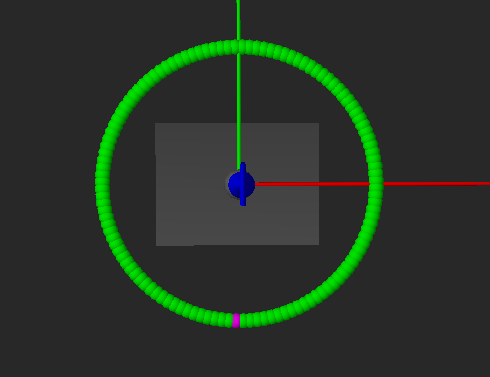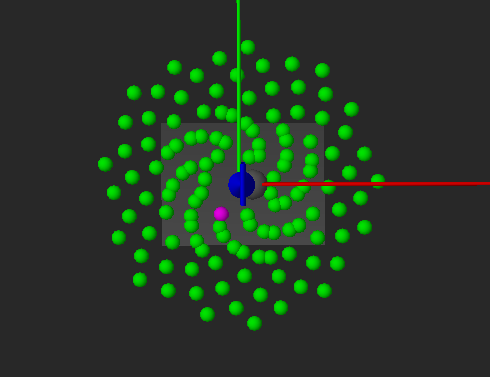In order to correctly describe the mapping characteristics of microphone arrays, the terms beamwidth and dynamic range were introduced: An ideal microphone array would map acoustic sources with both, a small beamwidth and a high dynamic range. Besides the array dimension and the number of microphones, the mapping characteristics notably depend on the distribution of microphones, as the example in figures 1 and 2 indicates.
The figures show two different array types, the Ring and Fibonacci array. Both are constructed with a diameter of D=70 cm and a microphone number of N=120, differing only in the distribution of microphones. When simulating array measurements under identical conditions, the values for beamwidth and dynamic range given in the table can be determined.
Clearly, the Ring array consistently contains a smaller beamwidth while the Fibonacci array is provides a higher dynamic. However, the perfect conditions mentioned above are not met: Depending on the distribution of microphones, either the beamwidth or the dynamic range is optimized. The incompatibility of a small beamwidth and a high dynamic is one of the main characteristics of the microphone aperture: While a higher microphone density on edge regions, i. e. the Ring array, leads to a small beamwidth, the concentration of microphones near the array center will lead to a higher dynamic. The Fibonacci Array shows a nearly constant microphone density over its area, hence it represents a compromise for the described phenomenon.
Consequently, arrays can be adjusted for different fields of application by optimizing the microphone distribution. Additionally, other parameters like focal distance, frequency and the chosen beamforming approach have an impact on the point spread function of microphone arrays.



